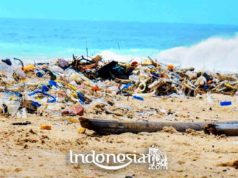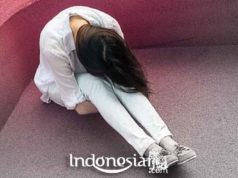The Musi River is a river located in the province of South Sumatra, Indonesia. With a length of 750 km, this river is the longest on the island of Sumatra and divides Palembang City into two parts. The Ampera Bridge, which is the icon of Palembang City, also crosses this river. Since the days of the Srivijaya Kingdom until now, this river is known as the main means of transportation for the community.
This river flows in the southern part of the island of Sumatra which has a tropical rainforest climate (code: Af according to the Köppen-Geiger climate classification). The annual average temperature is around 24 ° C. The warmest month is July, with an average temperature of 26 ° C, and the coldest February, around 23 ° C. The average annual rainfall is 2579 mm. The month with the highest rainfall is April, with an average of 344 mm, and the lowest is September, with an average of 99 mm.
The Musi River divides Palembang City into two areas: Seberang Ilir in the north and Seberang Ulu in the south. The Musi River, along with other rivers, forms a delta near the City of Sungsang.
The springs are sourced in the Kepahiang area, Bengkulu. The Musi River is also called “Batanghari Sembilan” which means nine major rivers. The meaning of the nine major rivers is the Musi River and the eight major rivers that empty into the Musi River. The eight rivers are:
- Komering River
- River Rawas
- Sungai Leko / Batang Hari Leko
- The Lakit River
- Kelingi River
- Lematang River
- Sungai Lahan / Sungai Semangus
- Ogan River
The area of 3 million hectares in the Musi river basin is considered critical due to rampant illegal logging. This condition can trigger flash floods and landslides.
Musi watershed is geographically located at 103 ° 34 “12” – 105 ° 0 “36” East Longitude and 02 ° 58 “12” – 04 ° 59 “24” LS with an area of 7,760,222, 86 Ha. Administratively, the Musi River Basin includes 4 (four) provinces, namely South Sumatra, Bengkulu, Jambi and Lampung. Districts / Cities in South Sumatra Province that are included in the Musi River Basin include 17 (seventeen) Regencies / Cities or all Regencies / Cities in South Sumatra Province. Regencies in Bengkulu Province that are included in the Musi River Basin include Rejang Lebong and Kepahiang Districts, while districts in Jambi Province that are included in the Musi River Basin include Sarolangun Regency, Tanjung Jabung Timur Regency, Batanghari Regency, and Muaro Jambi Regency. And districts in West Lampung Province that are included in the Musi River Basin include West Lampung and Way Kanan districts.
The Musi watershed is divided into 22 sub-watersheds, namely the Banyuasin sub-watershed, Batang Pelidang sub-watershed, Batanghari Leko sub-watershed, Baung sub-watershed, Bungin sub-watershed, Calik sub-watershed, Deras sub-watershed, Kelingi sub-watershed, Kikim sub-watershed, sub-watershed Komering, Lakit sub-watershed, Lalan sub-watershed, Lematang sub-watershed, Macan sub-watersheds, Medak sub-watersheds, Musi Hilir sub-watersheds, Musi Hulu sub-watersheds, Ogan sub-watersheds, Rawas sub-watersheds, Soleh sub-watersheds, Semangus sub-watersheds and sub-watersheds Sugihan.
So, the Musi river also has an important role and history for the people of South Sumatra. Are you interested in traveling to the Musi river?
Source : wikipedia
































